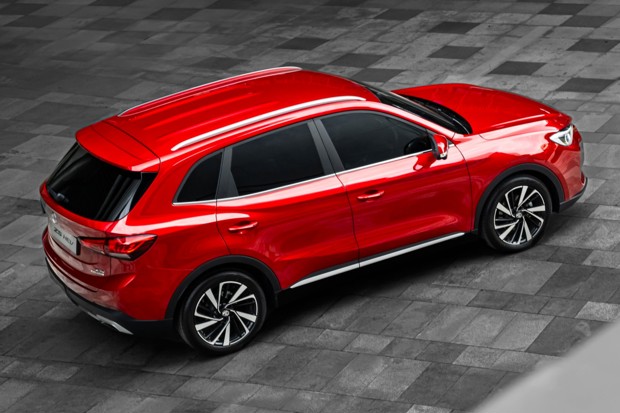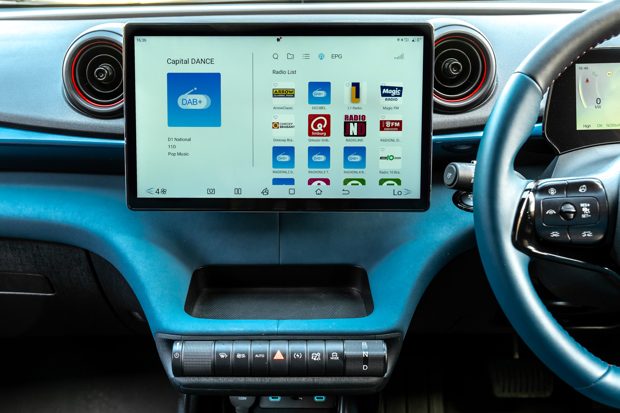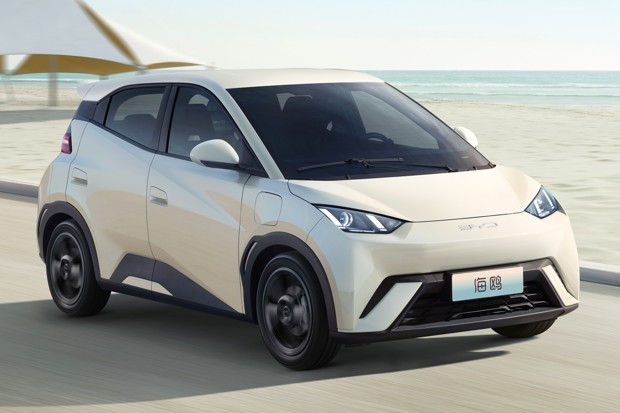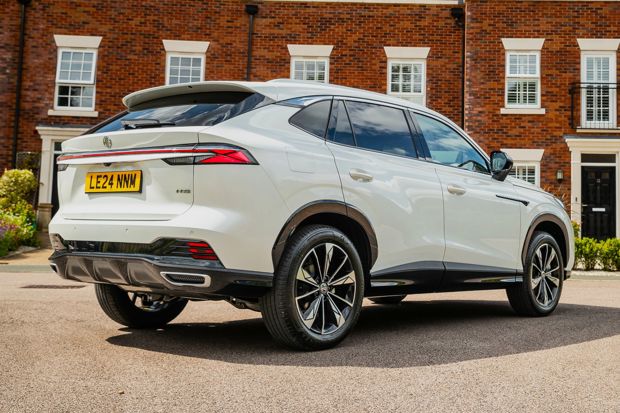Chinese Electric Vehicle - Marketshare & Statistics
The Chinese EV Revolution
It wasn’t too long ago that Chinese car brands were barely registered outside their home market. Early attempts to go global were met with scepticism, often dismissed as copycats or, at best, cheap alternatives to Western and Japanese automakers.
But fast-forward to 2025, and China is leading the electric vehicle (EV) market.
Led by brands like BYD, NIO, and XPeng, Chinese EVs have surged from relative obscurity to dominate the global stage. China is now the world's largest EV producer and exporter, with homegrown brands outselling legacy giants in key markets and forcing those brands to rethink their strategies.
But how and why has the Chinese EV revolution taken the world by storm? And with Western tariffs threatening to slow their momentum, can Chinese automakers maintain their breakneck growth?
Key Statistics
-
Global EV sales reached 17.1 million units in 2024, with China accounting for 11 million — around 65% of the total.
-
In 2024, plug-in hybrids (PHEVs) grew by 81% in China, compared to 19% growth for battery electrics (BEVs).
-
China’s EV market penetration rate reached 52.3% in November 2024, up from 36% in July 2023.
-
Automaker BYD delivered nearly 4.3 million electric vehicles in 2024, becoming China’s largest car manufacturer. Its entire passenger car fleet consists of BEVs (battery electric vehicles) and PHEVs (plug-in hybrid vehicles).
-
BYD now commands over one-third of new EV sales in China, offering more than 40 models across four EV brands.
-
Foreign brands’ market share in China dropped to 37% in 2024, down from 64% in 2020.
-
In the first half of 2025, 5.468 million EVs were sold in China, putting the market firmly on track to reach the projected 12 million sales by year end.
-
By June 2025, EVs made up over 53% of all new car sales in China, confirming that more than half the market is now electric.
-
China’s EV market is projected to reach 12 million units in 2025, surpassing traditional combustion engine vehicle sales (estimated at under 11 million) for the first time.
-
NEV penetration in China is forecast to rise from 49% in 2024 to 58% in 2025.
-
China’s EV market revenue is projected to reach US$377.9 billion in 2025.

Why Are Chinese EVs Dominating?
BYD (Build Your Dreams)
Car manufacturer BYD is the world’s largest new energy vehicle (NEV) maker, selling nearly 4.3 million EVs in 2024 and becoming China’s biggest carmaker. Its passenger fleet is now fully electric, with a mix of BEVs (battery electric vehicles) and PHEVs (plug-in hybrids).
The company operates multiple plants across China, with its largest facility in Hefei producing up to 1.32 million vehicles annually. In 2025, BYD also overtook Tesla in global pure-electric sales and launched a dedicated shipping fleet, giving it capacity to export over 1 million vehicles a year. New plants in Hungary and Turkey will further strengthen its European presence.
While BYD has scaled back some domestic output and trimmed its 2025 sales target to around 4.6 million units, it continues to dominate China’s EV landscape with over 40 models across multiple brands.
Flagship models include:
-
Han EV (business sedan)
-
Qin Plus EV (urban commuter)
-
Dolphin (compact)
Outside of China the UK has become BYD’s biggest market after sales surged 880% in September 2025 compared to September 2024. The majority of sales were the plug-in hybrid version of the Seal U SUV with 11,271 sales last month.
SAIC Motor (MG)
SAIC Motor is China’s largest state-owned carmaker, headquartered in Shanghai. In 2023, it reported revenue of $105.2 b, ranking 93rd on the Fortune Global 500.
Under SAIC, the MG brand has become its primary vehicle in overseas markets, especially Europe. In the first half of 2023, MG registered 104,300 vehicles in Europe, the majority electric, achieving 128% growth on the previous year. By the first half of 2025, that number had climbed to 153,100 vehicles, most of them EVs, reflecting the brand’s growing foothold in the region.
In China, SAIC delivered 2.053 million vehicles in H1 2025, up 12.4% year-on-year, with August 2025 alone seeing a 41% surge and nearly 130,000 NEVs sold. To strengthen its export reach, MG/SAIC has even commissioned one of the world’s largest car carriers, able to transport around 9,500 vehicles to Europe in a single voyage.
SAIC is also deepening its tech alliances. In 2025, it entered a strategic partnership with Huawei to co-develop “smart EVs,” combining SAIC’s scale in manufacturing with Huawei’s software and hardware expertise.
Flagship MG / SAIC models include:
-
MG4 EV (electric hatchback)
-
MG3 HEV (hybrid hatchback)
-
MG Cyberster (electric roadster)
Li Auto
Founded in 2015, Li Auto rapidly carved out a position in China’s EV / NEV space. In 2024, it delivered between 501,812 and 511,812 vehicles, a strong showing for a relatively young automaker. The company also aimed to expand into the Middle East (UAE, Saudi Arabia) and set an ambitious global sales target of 1.6 million vehicles by 2025.
In 2025, Li Auto redoubled its international push: it launched its Li i6 battery-electric SUV in September, beginning deliveries to signal deeper entry into pure EVs.
Its cumulative deliveries by September 2025 reached 1,431,021, with 33,951 vehicles sold in September alone.
To support overseas growth, Li Auto has formed a dedicated international division and established dealer partnerships in the Middle East and Central Asia.
Despite challenges, it continues to refine its product lineup: for instance, it streamlined the i8 SUV models into a single variant in 2025 to reduce complexity.
Flagship models include:
-
Li L9 (premium / luxury SUV)
-
Li L8 & L7 (mid-range SUVs)

Why Are Chinese EVs Dominating?
Policy Support
If there’s one reason China’s EV industry has left the rest of the world playing catch-up, it’s policy. While many Western governments hesitated over incentives and infrastructure, China treated electric vehicles as a strategic national priority - backing the industry with billions in funding, tax breaks, and regulations designed to accelerate adoption.
Between 2009 and 2023, China poured over $230 billion into subsidies and tax incentives, making EVs more affordable for consumers and giving manufacturers the firepower to scale up production. Buyers benefitted from direct rebates, a 10% sales tax exemption, and long-term incentives to switch from petrol to electric.
That support continues. New tax exemptions introduced in 2023 extend through 2027 — worth up to RMB 30,000 ($4,170) for purchases in 2024–25, tapering to RMB 15,000 ($2,085) in 2026–27.
The results are clear. EVs are now hugely popular with Chinese drivers: BYD alone accounted for around 10% of all cars sold in China in 2024, not just EVs. Policy support has created a domestic market that buys more EVs than the rest of the world combined, and built the foundation for an export industry now challenging legacy automakers on their own turf.
Cars are Becoming More Like Consumer Electronics
And that gives China a distinct advantage over its Western counterparts.
Building a world-class internal combustion engine is difficult — one of the reasons German carmakers built their reputation. But new energy vehicles (NEVs) have no engines, no transmissions, and far fewer moving parts. The focus has shifted from mechanical engineering to something China knows better than anyone: batteries.
Batteries are the most critical component in an EV, accounting for 30–40% of manufacturing costs. Success now depends on battery chemistry, power management, and software integration — areas where Chinese firms have a commanding lead.
China dominates the innovation pipeline. More than 65% of high-impact research publications on electric batteries originate from Chinese institutions, compared to ~12% in the US. Chinese companies also own more than a quarter of global patents in electric propulsion.
BYD illustrates this advantage. Once a mobile phone battery supplier, it used that expertise to become one of the world’s leading automotive battery makers. In 2025, BYD controls around 15–16% of the global EV battery market, second only to fellow Chinese giant CATL, which holds over 35%.
Meanwhile, traditional Western automakers are still scrambling to catch up, often reliant on Chinese suppliers like BYD and CATL for core battery technology and facing production bottlenecks as they electrify their fleets.
Cars today are as much about software and battery chemistry as they are about driving dynamics. And that shift plays directly to China’s industrial strengths.
Consumer Appeal
It’s not just policy and tech fueling China’s EV boom - cost and consumer preference are doing heavy lifting too.
In the UK and Europe, Chinese automakers have aggressively expanded affordable options. Over the past year, the number of Chinese EVs priced under £30,000 rose from 9 to 29 models, helping narrow the price gap with petrol vehicles from ~35% to ~24% — effectively saving buyers ~£3,600.
That pricing strategy is working. A pan-European EV driver survey in 2025 found 59% of European drivers would consider buying a Chinese EV for their next car (24% “very likely,” 35% “quite likely”). Similarly, Escalent’s latest data shows 47% of prospective buyers in major EU markets would consider a Chinese car, outpacing consideration for American ones.
Meanwhile, UK media and industry commentators point to Chinese models as a key force pushing down new EV prices and increasing consumer choice in the sub-£30k segment.
The Role of Tech & AI in the EV Future
China’s automakers are no longer competing only on price, they’re racing to redefine what a car is. Increasingly, Chinese EVs are “smartphones on wheels”, packed with AI-driven features, autonomous driving software, and connected ecosystems.
XPeng has positioned itself as a leader in autonomous driving, investing heavily in AI-powered navigation systems that rival Tesla’s Autopilot. NIO offers advanced driver-assistance features and is trialling autonomous “robo-taxi” services in Chinese cities. Meanwhile, SAIC’s 2025 partnership with Huawei shows how carmakers are joining forces with tech giants to merge cutting-edge hardware with seamless software.
This convergence of EVs and consumer electronics gives Chinese brands a distinct advantage. For younger, tech-savvy buyers, cars are becoming less about horsepower and more about digital experience, connectivity, and integration with everyday devices - areas where China’s consumer tech ecosystem already leads the world.

Cost Advantages: How China Undercuts Global Rivals
Production Efficiency
China’s raw manufacturing efficiency allows its automakers to build cars faster and cheaper than their Western rivals. Even after tariffs, the cost savings are passed on to drivers. Analysts estimate that Chinese EV makers enjoy a built-in cost advantage of around 20% compared to the US and Europe - meaning their cars can undercut Western counterparts by thousands.
The difference is stark. Manufacturing a BYD Seal sedan in Eastern Europe adds roughly $500 per car in labour costs, while shifting production to Germany would quadruple that amount.
Parts sourcing tells a similar story. Western automakers still rely on a patchwork of suppliers, many of them Chinese. By contrast, BYD produces almost everything in-house: batteries, semiconductors, transmissions, axles, and driver assistance systems (ADAS). Even wiring harnesses, braking systems, and body control modules are built internally. Only tyres and windows are fully outsourced.
This vertical integration keeps costs low and supply chains resilient, allowing Chinese manufacturers to ramp up production quickly and respond to market shifts more effectively than their Western competitors.
BYD’s efficiency shows in its speed to market. In 2025 alone, it is launching multiple new models in Europe, including the Sealion 7 and Atto 2, taking its European line-up to nine models. Tesla, by comparison, has not introduced a new mass-market model since the Model Y in 2020, while its much-trailed Cybercab still lacks a firm release date.
Scale & Subsidies
China’s policymakers realised early on that competing directly with established ICE brands was futile. Instead, they made new energy vehicles (NEVs) a strategic priority.
Between 2009 and 2023, the government poured around $230 billion into subsidies and incentives, with annual support rising from $7.6 billion (2009–2017) to $45.2 billion in 2023. Battery giant CATL alone received $809 million in 2023, the same year it supplied 36.8% of global EV batteries - a share it has maintained at ~37% in 2025.
Incentives remain central today. A $72.3 billion package (2024–2027) extends tax breaks worth up to RMB 30,000 ($4,170) per vehicle, while a 2025 trade-in scheme offers up to RMB 20,000 for scrapping older cars. NEV purchase tax exemptions are also locked in through 2027.
Some local subsidies have already been cut, and Beijing plans a gradual phase-out by 2027 if NEVs stay above 50% of sales. But the message is clear: China built the world’s largest EV market on state support, and continues to use policy to maintain its lead.
Supply Chain & Sustainability Challenges
For all its dominance, China’s EV industry faces challenges of its own. The country controls the majority of the world’s battery manufacturing capacity, but it still relies heavily on imports of lithium, cobalt, and nickel from regions like Africa and South America. To secure its supply, China has invested billions in overseas mining operations and long-term contracts, particularly in Chile, Indonesia, and the Democratic Republic of Congo.
This reliance has raised concerns about supply chain vulnerability, as geopolitical pressures and resource nationalism could disrupt access to critical minerals. Western governments, meanwhile, are responding with their own strategies, from the EU’s Critical Raw Materials Act to the US Inflation Reduction Act, both designed to localise supply chains and reduce dependency on China.
Sustainability is another pressure point. While Chinese automakers are pushing battery recycling and greener manufacturing processes, the scale of production poses long-term environmental risks. How effectively China addresses these challenges will shape whether its lead is secure or fragile.
Innovation
Global demand for EV batteries is expected to rise tenfold by 2030, and the main suppliers are already Chinese.
CATL and BYD dominate the global market. As of 2025, CATL holds 37.9% market share (up from 36.8% in 2023), while BYD has grown to 17.2% (up from 15.9%). Their reach goes far beyond domestic brands: Tesla, BMW, and Toyota all rely on Chinese batteries.
The reasons are simple: price, efficiency, range, and performance. CATL’s new Shenxing Plus battery can deliver up to 600 km (~373 miles) of range with just 10 minutes of charging. This kind of breakthrough is already appearing in mass-market models, putting Western automakers under pressure to catch up.
At the same time, China is pushing into sodium-ion batteries as lithium costs rise. Sodium cells have lower energy density but are far cheaper to produce, and Chinese companies have filed the majority of global patents in this field. Pilot vehicles using sodium-ion packs are already on Chinese roads.
This combination of market dominance and relentless innovation means Chinese carmakers can deliver some of the world’s most technologically advanced EVs, and roll out improvements years before many global rivals.

The Western Response
Fearing an onslaught of low-cost Chinese EVs, Western governments have moved to protect domestic manufacturers with sweeping trade barriers.
In Europe, new anti-subsidy tariffs took effect on 30 October 2024, hitting Chinese automakers with steep additional duties:
-
SAIC (MG): 35.3%
-
BYD: 17.0%
-
Geely: 18.8%
-
Tesla (China-made models): 7.8%
These are applied on top of the EU’s standard 10% import duty, making some Chinese EVs up to 45% more expensive for European buyers.
In the United States, measures have been even harsher. In 2024, tariffs on Chinese EVs jumped from 25% to 100%, effectively doubling their price. Import duties of 25% were also extended to battery materials and critical minerals, alongside restrictions on semiconductor imports.
Since taking office in 2025, President Trump has gone further. By March, his administration had imposed:
-
a 20% tariff on all Chinese goods,
-
a 25% tariff on goods from Mexico, and
-
a 25% tariff on all vehicle imports - potentially affecting any car sold in the US that isn’t built domestically.
Together, these moves mark a decisive turn towards protectionism, reshaping global EV trade flows and forcing Chinese automakers to accelerate overseas production plans.
Industry Backlash
Not everyone is on board with Europe’s protectionist turn. In 2025, BMW, Tesla, and other automakers launched legal challenges against the EU’s anti-subsidy tariffs, arguing they punish consumers and risk disrupting supply chains. Volkswagen has publicly branded the tariffs “the wrong approach,” and Germany’s powerful auto lobby continues to push for a softer stance.
Divisions run deep across Europe. Germany, with its heavy export reliance on China, opposes the measures, while countries such as France, Italy, Poland, and Greece back the tariffs, claiming European automakers need protection from low-cost Chinese imports.
Chinese Manufacturers Are Adapting
Rather than retreat, Chinese automakers are re-shaping their strategies to stay competitive in Europe:
-
SAIC (MG) pledged to keep prices steady in France and Italy for 2024 deliveries, initially absorbing tariff costs rather than passing them on.
-
BYD, NIO, and Geely are actively exploring new factories in Europe to sidestep import duties. BYD’s first European plant in Hungary is scheduled to begin production in late 2025.
Hybrid models are gaining traction, as they often face fewer restrictions than pure EVs — playing to the strengths of brands like MG and Li Auto.
Global Market Impact
For the second year running, China is the world’s largest auto exporter. In 2024, it shipped 4.1 million passenger vehicles abroad — a 24% year-on-year increase — with one in four exports being a New Energy Vehicle (NEV).
United Kingdom
-
MG sold more than 68,000 vehicles in 2024, cementing its position as the UK’s fastest-growing brand.
-
Chinese-branded EVs could make up a quarter of Britain’s electric fleet by 2030, according to industry forecasts.
-
By early 2025, the number of Chinese EVs priced under £30,000 in UK showrooms had risen from 9 to 29 models, giving buyers unprecedented choice.
Europe
-
In 2019, Chinese EVs held just 0.5% of the European market. By 2023, that had jumped to 8.2%.
-
Market share reached an estimated 11% in 2024, and is projected to hit 20% by 2027, with 3.3 million units expected to sell in 2025.
-
With brands like BYD, MG, and NIO rapidly expanding operations, including BYD’s new plant in Hungary (opening late 2025), Europe is now China’s most valuable export market outside Asia.
United States
The US remains a tougher battleground. Chinese EVs face high tariffs, complex tax credit rules, and elevated interest rates. Still, the American EV market is projected to grow 16% in 2025, showing strong underlying demand.
The defining rivalry is BYD vs Tesla. In Q4 2024, BYD overtook Tesla as the world’s largest EV maker, delivering 525,409 vehicles compared to Tesla’s 484,507. BYD has maintained its lead in early 2025, underscoring China’s global dominance.
Emerging Markets
China’s biggest gains are coming where Western and Japanese rivals have been slow to pivot:
-
Brazil: Chinese brands already control over 80% of EV sales, making Brazil their largest single export destination (16% of all exports).
-
Thailand: Market share leapt from 46% in 2022 to 77% in 2023, and has held above 70% into 2025.
-
Southeast Asia & Latin America: Both regions are key growth markets, where China’s affordable EVs are rapidly outpacing traditional automakers.
With demand booming across both developed and emerging markets, and local competition often lagging, China is on course to dominate global EV adoption well into the next decade.

2025 & Beyond Outlook
The transition to electric vehicles is accelerating. In 2025, global EV sales are expected to rise by 20%, reaching 20.4 million units, up from 17 million in 2024.
In the UK, predictions suggest EVs will account for 23% of all new car sales, up from 19.6% this year.
China will remain the world’s largest EV market, not only in production but also in demand, with plug-in hybrid (PHEVs) and extended-range EVs (EREVs) gaining traction alongside fully electric models. In fact, China is poised to become the first major market where EVs outsell ICE vehicles.
Technology Breakthroughs
Solid-state batteries are expected to hit mass production in the near future, offering:
-
Up to 450 Wh/kg energy density
-
Over 600 miles of range on a single charge
-
Longer lifespan and improved safety
Ultra-fast charging is also evolving, with 800V architectures enabling:
-
100 miles of range in just 5 minutes
-
Charging times dramatically reduced, making EVs even more convenient
Infrastructure Development
More EVs on the road means more charging stations are needed.
-
The UK has approved £500 million for charging infrastructure projects, aiming to expand its network for future demand.
-
Globally, there are currently 4 million public charging stations, but by 2035, an estimated 219 million will be required.
-
China accounts for 72% of the world’s public charging infrastructure.
As governments worldwide invest in EV infrastructure, charging access will become a key driver of market growth, with China once again setting the pace.
More Affordable EVs
As battery and manufacturing costs stabilise, cheaper EV models will enter the mass-market. Chinese automakers will continue optimising production efficiency, with an increased focus on sustainability, such as:
-
Using recycled materials in battery production
-
Reducing emissions in the manufacturing process
-
Exploring new lightweight materials to improve efficiency
One of the biggest barriers to EV adoption currently is price; a greater number of cheaper EVs will make price-conscious consumers more likely to switch from ICE vehicles.
Will Tariffs Slow China’s Growth?
The global trade landscape remains highly uncertain, and tariffs continue to shape where and how Chinese EVs can compete.
In the United States, the Trump administration’s 2025 tariffs, including a 25% levy on all vehicle imports and 20% on Chinese goods, have effectively shut Chinese EVs out of the market for now.
In Europe, protectionist duties remain in force, but stricter CO₂ reduction targets are squeezing traditional automakers, forcing them to accelerate their EV shift — indirectly boosting demand for Chinese brands that can supply affordable models quickly.
Meanwhile, Chinese manufacturers are pivoting aggressively to emerging markets. With EV adoption still in its early stages, regions like Latin America, Southeast Asia, and the Middle East represent major growth opportunities. In Brazil and Thailand, Chinese EVs already dominate with market shares of 80%+ and 70%+ respectively, a template for expansion elsewhere.
Risks & Headwinds
Despite their rapid rise, Chinese EV makers are not invincible. The industry is grappling with overcapacity at home, with dozens of competing brands and the likelihood of consolidation in the next few years.
Fierce price wars are already underway: in 2024 and 2025, BYD and Tesla repeatedly slashed prices to defend market share, squeezing margins for smaller automakers. Global rivals like Hyundai, Volkswagen, and Stellantis are also accelerating their own EV transitions, investing heavily in new battery platforms and European gigafactories.
Political risks loom large too. Tariffs in the US and EU, along with growing scrutiny over data security and cybersecurity, threaten to limit access to lucrative markets. Meanwhile, consumer trust in Chinese brands outside Asia remains uneven, particularly in North America.
The combination of tariffs, competition, and potential overcapacity means that China’s EV revolution, while dominant today, will face significant tests in the years ahead.
The Road Ahead: A Chinese-Led EV Future?
With unstoppable momentum, cutting-edge technology, and a dominant position in global EV production, China is currently the driving force behind the global EV revolution. The response from Western carmakers will determine if that remains the case in 2025 and beyond.
Sources
European Commission, Center for Strategic & International Studies (CSIS), Fleet News, Information Technology & Innovation Foundation (ITIF), Transport and Energy, Al Jazeera, CNEV Post, Tech Wire Asia, Statista, MIT Technology Review, SMMT, Auto Trader, the Telegraph, Campaign Asia, BYD, China Daily, SCMP, China Briefing, Car Expert, Nikkei Asia, Reuters, Financial Times, Bloomberg, International Energy Agency (IEA), Escalent, PwC, EV Volumes, Counterpoint Research, International Council on Clean Transportation (ICCT), Fitch Ratings, CATL, XPeng, NIO, Volkswagen, BMW, Tesla.
